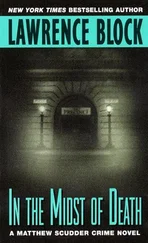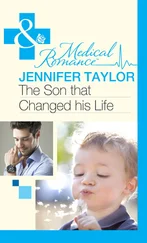Jennifer Worth - In the Midst of Life
Здесь есть возможность читать онлайн «Jennifer Worth - In the Midst of Life» весь текст электронной книги совершенно бесплатно (целиком полную версию без сокращений). В некоторых случаях можно слушать аудио, скачать через торрент в формате fb2 и присутствует краткое содержание. Жанр: Биографии и Мемуары, на английском языке. Описание произведения, (предисловие) а так же отзывы посетителей доступны на портале библиотеки ЛибКат.
- Название:In the Midst of Life
- Автор:
- Жанр:
- Год:неизвестен
- ISBN:нет данных
- Рейтинг книги:3 / 5. Голосов: 1
-
Избранное:Добавить в избранное
- Отзывы:
-
Ваша оценка:
- 60
- 1
- 2
- 3
- 4
- 5
In the Midst of Life: краткое содержание, описание и аннотация
Предлагаем к чтению аннотацию, описание, краткое содержание или предисловие (зависит от того, что написал сам автор книги «In the Midst of Life»). Если вы не нашли необходимую информацию о книге — напишите в комментариях, мы постараемся отыскать её.
In the Midst of Life — читать онлайн бесплатно полную книгу (весь текст) целиком
Ниже представлен текст книги, разбитый по страницам. Система сохранения места последней прочитанной страницы, позволяет с удобством читать онлайн бесплатно книгу «In the Midst of Life», без необходимости каждый раз заново искать на чём Вы остановились. Поставьте закладку, и сможете в любой момент перейти на страницу, на которой закончили чтение.
Интервал:
Закладка:
In 2004, a study of nearly 1,000 communities in twenty-four North American Regions reported that survival to hospital discharge was twenty-three per cent in those areas equipped with staff trained in using Automated External Defibrillators (AEDs), whereas survival was fourteen per cent in those areas without. [14] The Public Access Defibrillation Trial Investigators. Public-Access Defibrillation and Survival after Out-of-Hospital Cardiac Arrest. New Engl J Med 2004; 351: 637- 646. http://content.nejm.org/cgi/content/short/351/7/637
Increasingly, cardiac arrests which occur out-of-hospital are also being automatically treated by a special type of implanted pacemaker known as an Internal Cardiac Defibrillator (ICD). These have been available for more than ten years, and have been implanted in those people at the highest risk of developing lethal cardiac rhythm disorders. When implanted, the devices promptly diagnose and treat almost all lethal cardiac rhythm disorders within a few seconds, using an internal electric defibrillator shock. The widespread use of these devices might paradoxically skew the statistics regarding survival rates, as those not fitted with the device are likely to have less easily treatable conditions and are therefore less likely to be successfully resuscitated following a cardiac arrest.
In 2006 the Termination of Resuscitation Study investigators in Ontario reported on the development of a theoretical rule which would predict a low chance of survival from out-of-hospital cardiac arrest to hospital discharge. [15] Morrison LJ, Visentin LM, Kiss A, Theriault R, Eby D, Vermeulen M, Sherbino J, Verbeek PR, for the TOR Investigators. Validation of a Rule for Termination of Resuscitation in Out-of-Hospital Cardiac Arrest. New Engl J Med 2006; 355: 478- 487. http://content.nejm.org/cgi/content/short/355/5/478
Where there was no return of spontaneous circulation, no defibrillation shocks had been administered, and the arrest was not witnessed by the emergency services, the rule recommended termination of resuscitation. Of 776 patients with cardiac arrest for whom the rule recommended termination of resuscitation, only four survived (0.5 per cent) to hospital discharge. If the additional criteria of an emergency services response interval of more than eight minutes, were included, together with the arrest not being witnessed by a bystander, then this rule would have proved 100 per cent accurate. These factors should not be used to avoid resuscitation in all such cases, and they should not be applied automatically or be allowed to over-ride clinical assessments. However, they can be very helpful in judging the value or futility of attempting resuscitation or continuing resuscitation of victims of an out-of-hospital cardiac arrest.
Many resuscitations on out-of-hospital cardiac arrest victims are inevitably delayed, and the consequence can be brain injury or damage from lack of circulation and oxygen. It is very difficult to predict the likelihood of recovery from acute brain injury at the time of the arrest, and some patients do make a full recovery.
There are specific circumstances when a full recovery can occur after a long delay, such as cases of electrocution, drowning, hypothermia, poisoning, or anaphylactic (allergic) shock. According to the Resuscitation Council, by three days after the onset of coma related to cardiac arrest, fifty per cent of patients have died.† The International Liaison Committee on Resuscitation consensus statement on ‘post cardiac arrest syndrome’ states that the most reliable predictor of a poor outcome (vegetative state or brain death) is the absence of a pupillary light response, corneal reflex, or motor response to painful stimuli at seventy-two hours. [16] Neumar RW, Nolan J P, Adrie C et al. Post-Cardiac Arrest Syndrome. Epidemiology, Pathophysiology, Treatment, and Prognostication. A Consensus Statement From the International Liaison Committee on Resuscitation. Circulation 2008; 118: 2452-2483. http://circ.ahajournals.org/
On the basis of a systematic review of the literature, absent brain-stem reflexes or a low Glasgow Coma Scale motor score at seventy-two hours is reliable in predicting a poor outcome.
The frequency of prolonged coma or permanent brain disability after resuscitation will depend on the underlying cause of the cardio-pulmonary arrest, and the speed with which resuscitation was undertaken. A study published in 1997 of 464 out-of-hospital cardiac arrests in Bonn over three years reported that seventy-four patients (sixteen per cent) were discharged from hospital.f Thirty-four (7.3 per cent) were discharged alive without neurological deficit, twenty-two patients (4.7 per cent) were discharged with mild cerebral disability, nine (1.9 per cent) were discharged with severe residual cerebral disability, and a further nine (1.9 per cent) were in a persistent coma.
Traditionally it has been taught that resuscitation should always be attempted in people who have collapsed or in patients whose condition has suddenly deteriorated. The case of Karen Ann Quinlan in the United States of America changed medical practice and provided a focus to moral teaching about death and resuscitation. [17] Fischer M, Fischera NJ, Schuttlerb J. One-year survival after out-of-hospital cardiac arrest in Bonn city: outcome report according to the ‘Utstein style’. Resuscitation 1997; 33: 233-243. http://www.resuscitationjournal.com/ X http://www.karenannquinlan.org/
In 1975, aged twenty-one years old, Karen Ann Quinlan was found unconscious and not breathing in bed shortly after consuming alcohol and drugs at a party. Resuscitation was performed, but she did not regain consciousness and remained in a persistent vegetative state for several months. Her family felt that she would never recover, and wanted to withdraw medical treatment including mechanical ventilation. Medical and hospital staff refused, on the basis that this would result in her intended and hastened death; the New Jersey Supreme Court ruled that the patient or their guardian had the right to determine their treatment, that medical staff had no rights independent of the patient, and that there was no obligation for medical staff to use extraordinary means to preserve life. This ruling confirmed the principle that medical treatment could be withdrawn, and resuscitation did not necessarily have to be attempted. Karen Ann Quinlan became known as the ‘right to die’ case.
The case also resulted in clarification of the legal status of ‘Do Not Attempt Resuscitation’ orders, and the concept of advanced directives with regard to possible future scenarios or treatments. It reaffirmed the idea that a patient always has the right to refuse extraordinary means of treatment, even if it will hasten their death. Furthermore, the Karen Ann Quinlan case resulted in the establishment of Ethics Committees in many hospitals to provide guidance to clinical staff in situations where patients do not consent to recommended treatments, or where unreasonable treatment is demanded.
If a heart attack is treated promptly with defibrillation, and if other emergency treatment prevents damage to the heart, the patient can often return to a normal life and have a normal life expectancy. Clearly resuscitation in this circumstance would be worthwhile. On the other hand, if a patient with an advanced disease, such as terminal cancer or terminal lung failure, develops a sudden lethal cardiac rhythm disorder, successful resuscitation might result in limited benefit, such as survival for a few more days or weeks, potentially in the context of receiving intensive medical care. Many people would regard this second example of resuscitation as futile, or of limited value. Between these two examples are many shades of grey, and it is good medical practice to try to establish the likely value or futility of emergency resuscitation in each patient during acute illness or admission to hospital. It is also good medical practice to try to think about the likely value of undertaking emergency resuscitation if someone has a chronic progressive and untreatable condition.
Читать дальшеИнтервал:
Закладка:
Похожие книги на «In the Midst of Life»
Представляем Вашему вниманию похожие книги на «In the Midst of Life» списком для выбора. Мы отобрали схожую по названию и смыслу литературу в надежде предоставить читателям больше вариантов отыскать новые, интересные, ещё непрочитанные произведения.
Обсуждение, отзывы о книге «In the Midst of Life» и просто собственные мнения читателей. Оставьте ваши комментарии, напишите, что Вы думаете о произведении, его смысле или главных героях. Укажите что конкретно понравилось, а что нет, и почему Вы так считаете.












